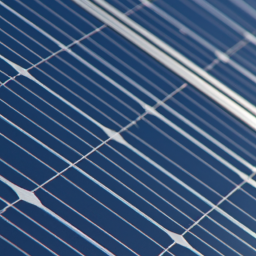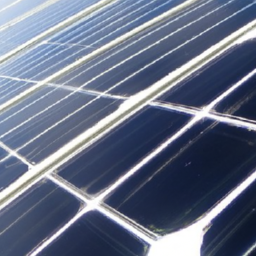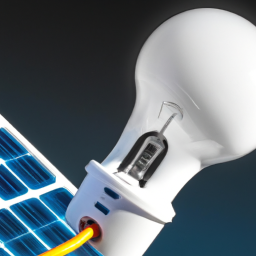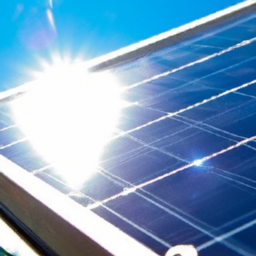Are you interested in using a solar generator to power your home or outdoor activities? If so, you may be wondering how to properly maintain and care for it. Fortunately, taking care of a solar generator is relatively simple and straightforward. In this article, we will discuss some tips and guidelines to help you keep your generator in top condition and ensure its long-term functionality. So, let’s dive in and learn more about maintaining and caring for a solar generator.
First and foremost, it is essential to regularly clean the solar panels of your generator. Over time, dirt, dust, and grime can accumulate on the panels, reducing their efficiency. To clean the panels, simply use a soft cloth or sponge and some water to wipe away any dirt or debris. Avoid using abrasive materials or harsh chemicals, as they can damage the panels. Additionally, inspect the panels for any signs of damage, such as cracks or loose connections, and address these issues promptly. With regular cleaning and inspection, your solar generator’s panels will continue to harness the sun’s energy effectively, maximizing its power output. In the next section, we will explore more tips on maintaining and caring for your solar generator. Maintaining and caring for a solar generator is essential to ensure its optimum performance and longevity. By following a few simple steps, you can keep your solar generator in excellent condition and minimize the need for repairs. In this article, we will guide you through the essential practices of regular cleaning, protecting from extreme weather conditions, checking for damage, monitoring battery levels, maintaining connections, proper storage, testing functionality, seeking professional help when needed, and educating yourself about your solar generator’s specific maintenance requirements.
Regular Cleaning
Cleaning the solar panels regularly
One of the most important maintenance tasks for your solar generator is to clean the solar panels regularly. Over time, dust, dirt, and other debris can accumulate on the panels, reducing their efficiency. To clean the panels, start by turning off the generator and safely accessing the panels. Use a soft cloth or sponge and a mild detergent solution to gently wipe away any dirt. Avoid using abrasive materials or harsh chemicals, as they can damage the panels. Rinse the panels with clean water and let them dry before turning the generator back on.
Removing dust and debris from the generator
In addition to cleaning the solar panels, it’s also crucial to remove any dust or debris from the generator itself. Use a soft brush or cloth to carefully wipe away any dirt, ensuring that all the vents and air filters are clear. Regularly check and clean the fan blades or cooling system if applicable. By keeping the generator clean, you can prevent the accumulation of debris that can affect its performance.
Protecting from Extreme Weather
Keeping the solar generator protected from rain and snow
When it comes to extreme weather conditions, such as rain or snow, it’s important to protect your solar generator. Ensure that the generator is installed in a location that is shielded from direct exposure to rainfall or snowfall. If necessary, build a protective cover or install a canopy to keep the generator dry. Moisture can damage the electronic components of the generator, so taking precautions to shield it from rain and snow is crucial.
Using a cover during strong winds or storms
In addition to rain and snow, strong winds and storms can pose a threat to your solar generator. During periods of inclement weather, consider using a cover or tarp to protect the generator from flying debris or falling objects. Secure the cover tightly to prevent it from being blown away by strong winds. By taking these precautionary measures, you can minimize the risk of damage to your solar generator during extreme weather events.
Checking for Damage
Inspecting the solar panels for any cracks or physical damage
Periodically inspect your solar panels for any signs of damage, such as cracks or physical deformities. If you notice any issues, it’s important to address them immediately. cracks in the solar panels can affect their efficiency and may require professional repairs or replacements. Regular inspections will help you identify and resolve potential issues before they escalate.
Examining the battery for leaks or corrosion
The battery is a critical component of your solar generator, and it’s important to check its condition regularly. Examine the battery for any leaks or signs of corrosion. If you notice any leaks, consult a professional for assistance. Corrosion on the battery terminals can be cleaned using a mixture of baking soda and water and a soft brush. Regular maintenance of the battery will ensure its optimal performance and prevent any potential malfunctions.
Monitoring Battery Levels
Checking the battery charge levels regularly
To ensure that your solar generator is always ready to provide power when needed, it’s essential to monitor the battery charge levels regularly. Most solar generators have built-in displays that show the state of charge. Check the display or use a voltmeter to measure the battery voltage. Monitoring the battery levels will allow you to anticipate when recharging is required.
Recharging the battery as needed
When the battery charge levels are low, it’s important to recharge the battery promptly. Follow the manufacturer’s instructions for recharging your specific solar generator. In some cases, this may involve connecting the generator to a power source or using a solar panel to recharge the battery. Regular recharging will ensure that your solar generator is always ready for use and will prolong the lifespan of the battery.
Maintaining Connections
Ensuring all connections are tight and secure
Check all the connections of your solar generator to ensure they are tight and secure. Loose connections can lead to inefficiencies or electrical issues. Gently tighten any loose connections but be cautious not to overtighten them. By maintaining proper connections, you can ensure that the system operates optimally and reduce the risk of potential hazards.
Cleaning and tightening the battery terminals
The battery terminals should also be regularly cleaned and tightened. Over time, corrosion or loose connections can affect the battery’s performance. Disconnect the battery before cleaning the terminals. Use a mixture of baking soda and water and a soft brush to clean the terminals. Once cleaned, ensure the terminals are securely connected. By keeping the battery terminals in good condition, you can enhance the overall performance and lifespan of your solar generator.
Storing Properly
Storing the solar generator in a cool and dry location
If you need to store your solar generator for an extended period, it’s essential to choose an appropriate location. The generator should be stored in a cool and dry place to prevent any damage caused by excessive heat or moisture. Ensure that the storage area is well-ventilated and protected from extreme temperatures. Proper storage will help maintain the integrity of the components and extend the lifespan of your solar generator.
Disconnecting the battery if not in use for long periods
When storing your solar generator for an extended period, consider disconnecting the battery. Disconnecting the battery will prevent unnecessary discharge and preserve its capacity. Before disconnecting the battery, ensure that it is fully charged and clean the terminals as previously mentioned. By taking these precautions, you can ensure that your battery remains in good condition during periods of non-use.
Testing Functionality
Testing the generator’s functionality periodically
Periodically testing the functionality of your solar generator is essential to catch any potential issues before they become significant problems. Test the generator by turning it on and examining whether all the components are working correctly. Ensure that power is being generated, and all the necessary outlets or ports are functional. If you notice any abnormalities, consult the manufacturer’s instructions or seek professional assistance.
Verifying that all components are working properly
During your functional test, make sure to check all the components of your solar generator. This includes the solar panels, battery, inverter, and any additional accessories. Confirm that they are all working properly and efficiently. Identifying any faulty components early on will allow for timely repairs or replacements, ensuring that your solar generator continues to provide reliable power.
Seeking Professional Help
Contacting a professional for maintenance and repairs
If you encounter any issues or require more advanced maintenance for your solar generator, it is advisable to contact a professional. A certified technician will have the expertise and knowledge to diagnose and repair any problems effectively. Regular maintenance by a professional can prevent major breakdowns and extend the lifespan of your solar generator.
Getting expert advice for optimal care
If you are unsure about any aspect of maintaining or caring for your solar generator, it’s always best to seek expert advice. Contact the manufacturer or a reputable solar professional to get guidance specific to your model. They can provide valuable insights and recommendations on how to optimize the performance and longevity of your solar generator.
Educating Yourself
Learning about the specific model and its maintenance requirements
To effectively maintain and care for your solar generator, it’s important to educate yourself about its specific model and maintenance requirements. Read the user manual provided by the manufacturer, which typically contains detailed instructions on installation, operation, and maintenance. Familiarize yourself with the different components, their functions, and any specific guidelines for cleaning or troubleshooting. The more you know about your solar generator, the better equipped you will be to care for it properly.
Reading the manufacturer’s instructions and guidelines
In addition to the user manual, the manufacturer may provide additional resources, such as online guides or instructional videos. Take the time to read or watch these resources to gain a comprehensive understanding of your solar generator’s care and maintenance. The manufacturer’s instructions and guidelines are specifically tailored to your solar generator, making them valuable sources of information for maintaining its optimal performance.
Conclusion
Maintaining and caring for a solar generator is crucial to ensure its optimal performance and longevity. By following the outlined practices of regular cleaning, protecting from extreme weather conditions, checking for damage, monitoring battery levels, maintaining connections, proper storage, testing functionality, seeking professional help when needed, and educating yourself about your specific solar generator’s maintenance requirements, you can maximize its efficiency and reliability. Regular maintenance and proper care will ensure that your solar generator continues to provide clean and reliable power for years to come.




